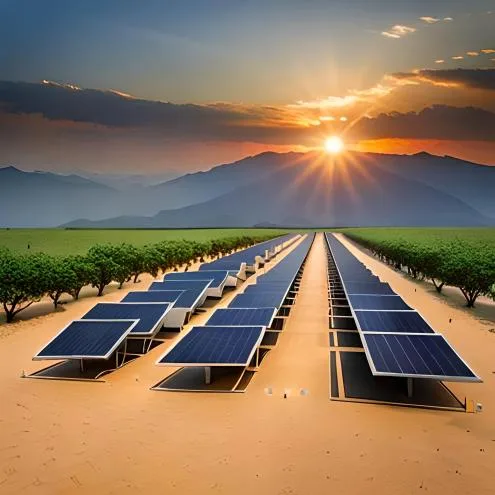
Solar energy has grown tremendously in recent years as a sustainable and renewable energy source. Solar energy is becoming more popular among both home and business owners as a way to save costs and reduce carbon emissions. However, several technological difficulties have surfaced as a result of the extensive use of solar energy systems. Solar is-landing, Anti Islanding, and zero export are three such issues. We shall examine the definitions of these words, their import, and their effects on solar power systems in this post. Let’s explore the solar is-landing problem and its remedies.
As the world moves towards a cleaner and greener future, solar energy has emerged as a leading renewable energy option. Solar panels harness the power of the sun to generate electricity, reducing dependence on fossil fuels and mitigating greenhouse gas emissions. However, efficient integration of solar energy into the grid requires addressing technical challenges like solar islanding, anti islanding, and zero export. In this article, we will explore these concepts and their implications for solar power systems.
Understanding Solar Islanding
- What is Solar Islanding?
Solar islanding refers to a situation where a solar power system continues to supply electricity to a section of the grid even when the main power supply from the utility company is disrupted. In other words, the solar system creates a localized “island” of power, operating independently from the grid.
- How Does Solar Islanding Occur?
Solar islanding can occur under various circumstances, such as grid maintenance, power outages, or grid malfunctions. When the grid loses power, solar inverters may continue to feed electricity into the grid, unaware of the outage. This can lead to safety hazards for utility workers trying to repair the grid and cause equipment damage.
The Dangers of Solar Islanding
| Risks to Utility Workers | When solar islanding occurs, utility workers trying to repair the grid run a serious risk. If a section of the grid remains energized by solar panels, workers may unknowingly encounter live power lines, leading to electric shocks or accidents. |
| Equipment Damage | Continued operation during solar islanding can damage solar inverters, batteries, and other system components. The constant flow of power without a stable grid connection can lead to equipment overheating and failures. |
| Legal and Safety Compliance | Solar islanding can also result in legal and safety compliance issues. Grid-connected solar systems must adhere to specific regulations to ensure the safety of workers and prevent damage to the electrical infrastructure. Anti Islanding Protection |
Anti Islanding Protection
| Importance of Anti Islanding Protection | To prevent solar islanding, anti islanding protection mechanisms are integrated into solar inverters. These safety features enable the inverter to detect grid loss and disconnect from the grid to avoid creating an island of power. |
| Types of Anti Islanding Protection | There are various methods of anti islanding protection, including: |
| Frequency Shift Anti Islanding | |
| Voltage Reduction Anti Islanding | |
| Overvoltage Anti Islanding | |
| Power Factor Shift Anti Islanding | |
| Inverter Function in Anti Islanding | |
| In order to protect against islanding, solar inverters are essential. They continuously monitor the grid and compare it to pre-set parameters. If any deviations are detected, the inverter initiates disconnection from the grid, ensuring safety during power outages. | |
| Frequency Shift Anti Islanding | Change in frequency Anti Islanding entails gently adjusting the solar inverter’s output frequency. If the grid frequency deviates from the set value, the inverter disconnects from the grid to avoid islanding. |
| Voltage Reduction Anti Islanding | Voltage reduction Anti Islanding works by lowering the output voltage of the solar inverter. If the grid voltage drops below a predetermined level, the inverter disconnects from the grid, preventing islanding. |
| Overvoltage Anti Islanding | By raising the solar inverter’s output voltage, overvoltage anti-islanding works. If the grid voltage exceeds safe limits, the inverter disconnects to prevent islanding and equipment damage. |
| Power Factor Shift Anti Islanding | Power factor shift Anti Islanding involves modifying the inverter’s power factor to detect grid abnormalities. If the power factor varies outside acceptable parameters, the inverter disconnects from the grid. |
What is Zero Export?
- How Does Zero Export Work?
Zero export refers to a solar power system’s ability to ensure that no excess electricity is exported back to the grid. Instead, all generated power is consumed on-site, minimizing grid dependence.
- Advantages of Zero Export
Zero export helps home-owners and businesses maximize their solar energy usage, reducing reliance on grid electricity and optimizing cost savings. It also enables better grid management and minimizes strain on the electrical infrastructure.
Combining Anti Islanding and Zero Export
Solar power systems may effectively manage power flow by combining(integrating) zero export capability with anti-islanding protection. In order to prevent islanding, the system disconnects when it detects grid interruptions and makes sure that no extra power is supplied back into the system.
Incorporating Battery Storage
- How Batteries Enhance Solar Systems
Integrating battery storage with solar systems offers several benefits, including energy storage for later use and improved self-consumption capabilities.
- Benefits of Battery Integration
Batteries enable storing excess solar energy for times when solar generation is low, such as night-time or cloudy days. This ensures a continuous power supply and further reduces grid dependence.
Regulations and Standards
- Grid Codes and Requirements
Grid codes and regulations govern the integration of solar systems into the electrical grid, ensuring safety, stability, and compliance with industry standards.
- Compliance and Certifications
Solar inverters and systems must adhere to specific certifications and compliance standards to guarantee optimal performance, safety, and grid compatibility.
Choosing the Right Solar Inverter
Summarize
Selecting the appropriate solar inverter is crucial for a successful and safe solar installation. Consider factors such as power rating, efficiency, Anti Islanding features, and compatibility with zero export functionality.
Anyone thinking about installing a solar power system needs to be aware of solar islanding, anti-islanding, and zero export. Proper Anti Islanding protection and zero export capabilities ensure the safety of utility workers, prevent equipment damage, and optimize solar energy usage. By complying with regulations and integrating battery storage, solar systems can be more efficient and sustainable, paving the way for a brighter, cleaner future.
FAQs (Frequently Asked Questions)
| Is solar islanding dangerous? | Yes, solar islanding can be hazardous for utility workers and may damage solar system components. |
| Can solar panels work during a power outage? | Whether the solar system has anti-islanding protection or not will determine this. If it does, it will shut down during an outage for safety reasons. |
| What are the benefits of zero export? | Zero export allows you to use all the solar energy you generate on-site, reducing your reliance on the grid and saving on electricity bills. |
| Are there government incentives for installing solar systems? | Many countries offer incentives, tax credits, or rebates to encourage the adoption of solar energy. |
| Can I use solar energy at night? | If your solar system has battery storage, you can use stored energy at night, otherwise, you’ll be reliant on the grid during non-generating hours. |
Supercharge Your Electric Vehicle(EV) : Embrace the Solar-Powered Wheel Revolution
Understanding the Different Categories of Solar Power Plantshttps://gksgs.co.in/differnt-types-of-solar-power-plants/#more-304
